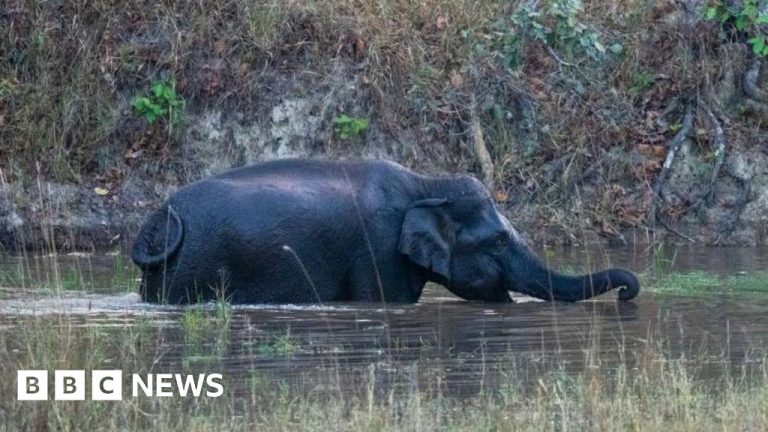Getty Images
An elephant in Bandhavgarh National Park
The death of 10 elephants in three days in a national park in central India has alarmed conservationists.
The animals, part of a herd of 13 elephants, died October 29-31 in Bandhavgarh National Park in Madhya Pradesh state.
A preliminary toxicology report indicates the elephants may have died after eating millet infected with a fungus.
The deaths made headlines and drew national criticism, putting state government on the back burner.
“(The toxicology report states) that the elephants had consumed a large quantity of rotten kodo (millet) plants and grains,” said L Krishna Murthy, a senior forest official who is leading an investigation into the deaths.
Early unconfirmed reports indicated that the elephants had been poisoned, possibly by farmers to prevent them from destroying crops. But government officials say there are no signs of deliberate poisoning.
The toxicology report states that cyclopiazonic acid – a fungal neurotoxin – was found in the samples taken from the dead elephants.
They are believed to have eaten a large quantity of kodo millet, which is typically grown in arid regions of countries like India, Pakistan, the Philippines and parts of West Africa.
About 35% of kodo millet produced in India is grown in Madhya Pradesh.
The crop grows quickly, can withstand drought conditions and can be stored for long periods. It is also easy to digest and has several health benefits.
But some studies have shown that consuming millet can cause “intoxication and poisoning” because the grains are “frequently infested” with a type of fungus that produces cyclopiazonic acid.
Another study, carried out by researchers at the Indian Millet Research Institute, indicates that although many “crops suffer from contamination (with cyclopiazonic acid), major adverse effects have only been recorded on kodo millet due to lack of scientific management”. They also suggest that certain practices, such as drying crops quickly, could ensure their safety.
S Shukla
Authorities destroyed kodo millet crops near the national park after the deaths
There have been reports of animals dying after eating the crop, but they are not very common.
In 1933, 14 elephants died near a forest in the southern state of Tamil Nadu after consuming kodo millet, according to a report co-authored by ecologist Raman Sukumar and mycologist TS Suryanarayanan in Down to Earth magazine .
Mr. Sukumar, who has worked extensively on the Asian elephant and human-wildlife conflict, told the BBC that elephants frequently eat millet when they enter fields in search of food. food.
Elephants have a good sense of smell, but mycotoxins are odorless and tasteless.
“I feel like the elephants were trying to eat as much as possible in as little time as possible because they knew the farmers would chase them away,” he said.
He adds that weather conditions likely also played a role in the fungal growth of millet. Days before these deaths, heavy rains fell in the area, creating humid conditions ripe for fungal infections.
After the media began blaming kodo millet, authorities destroyed some crops in villages near the national park.
The toxicology report recommends inspecting and destroying fungus-infected crop residues and preventing the entry of domestic and wild animals into these fields.
But farmers in the area said they have been growing kodo millet for years without any adverse effects.
Mr Sukumar also says it is still rare for fungal infections to produce mycotoxins in kodo millet.
“This time the elephants were unlucky,” he says.
Follow BBC News India on Instagram, YouTube, Twitter and Facebook

